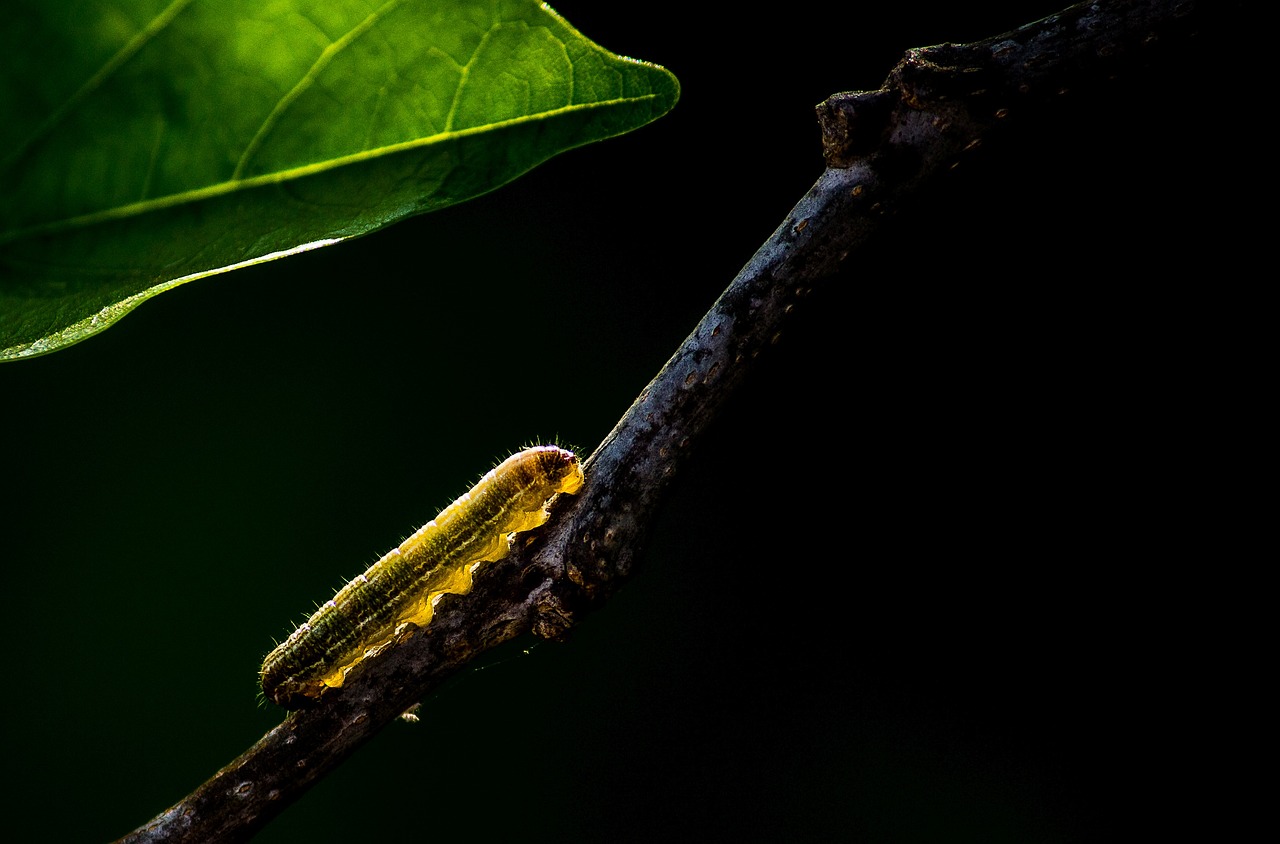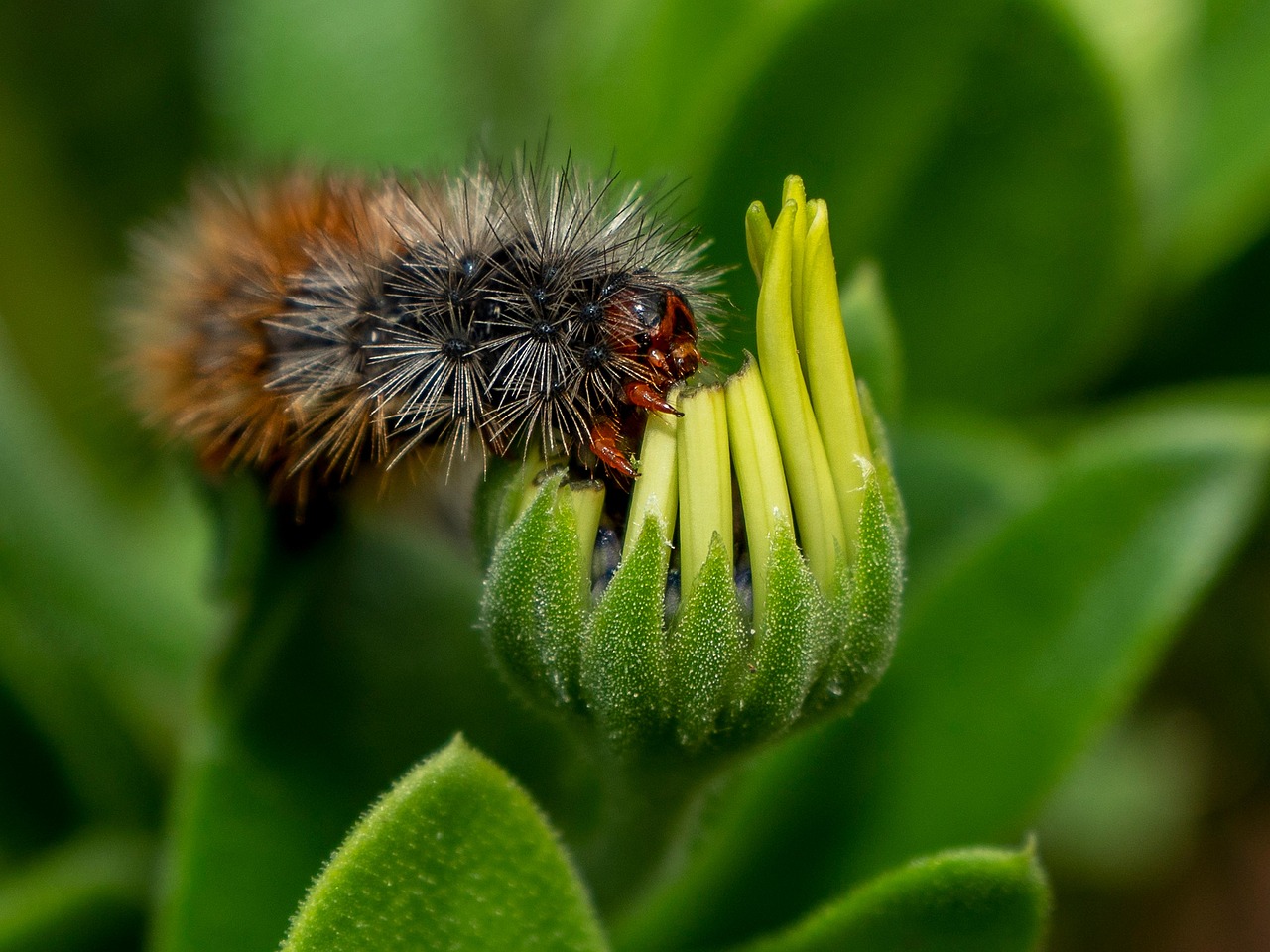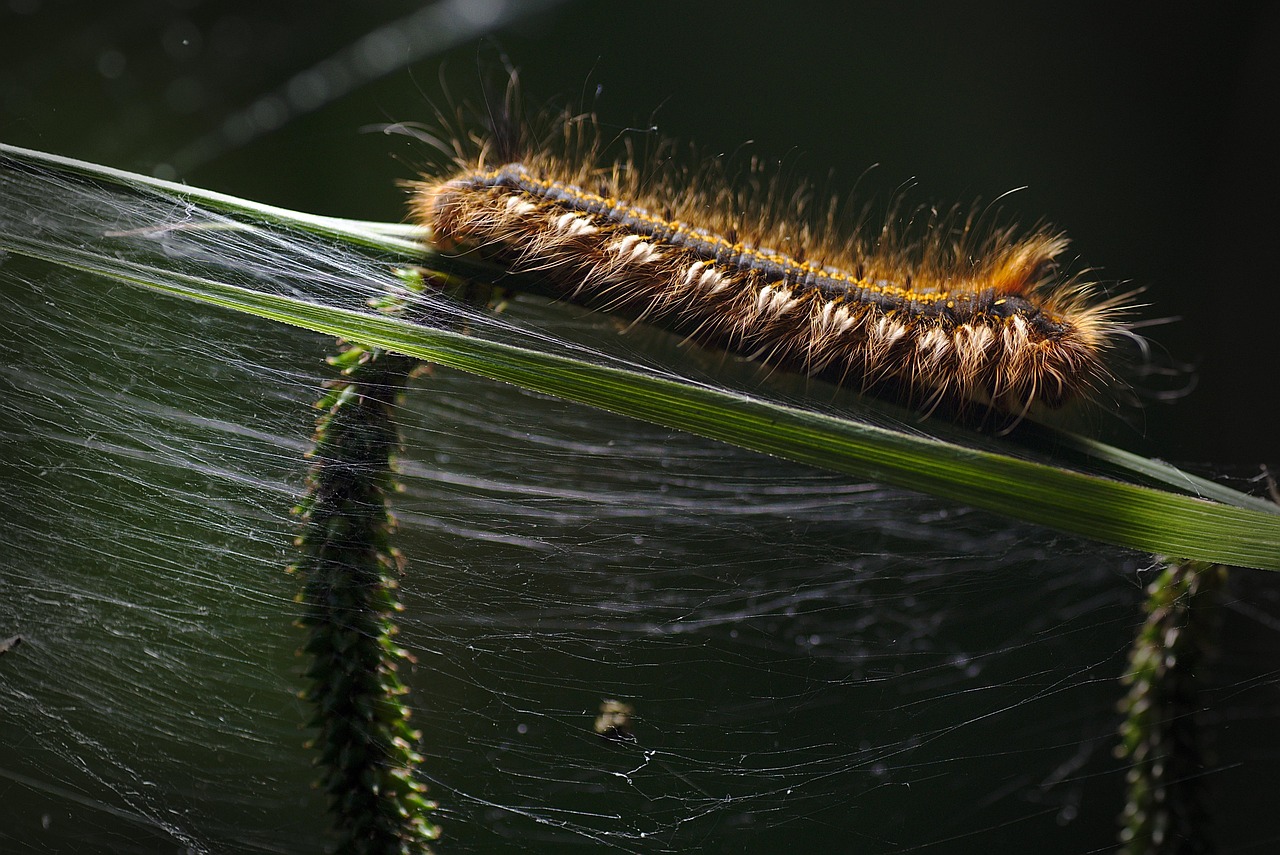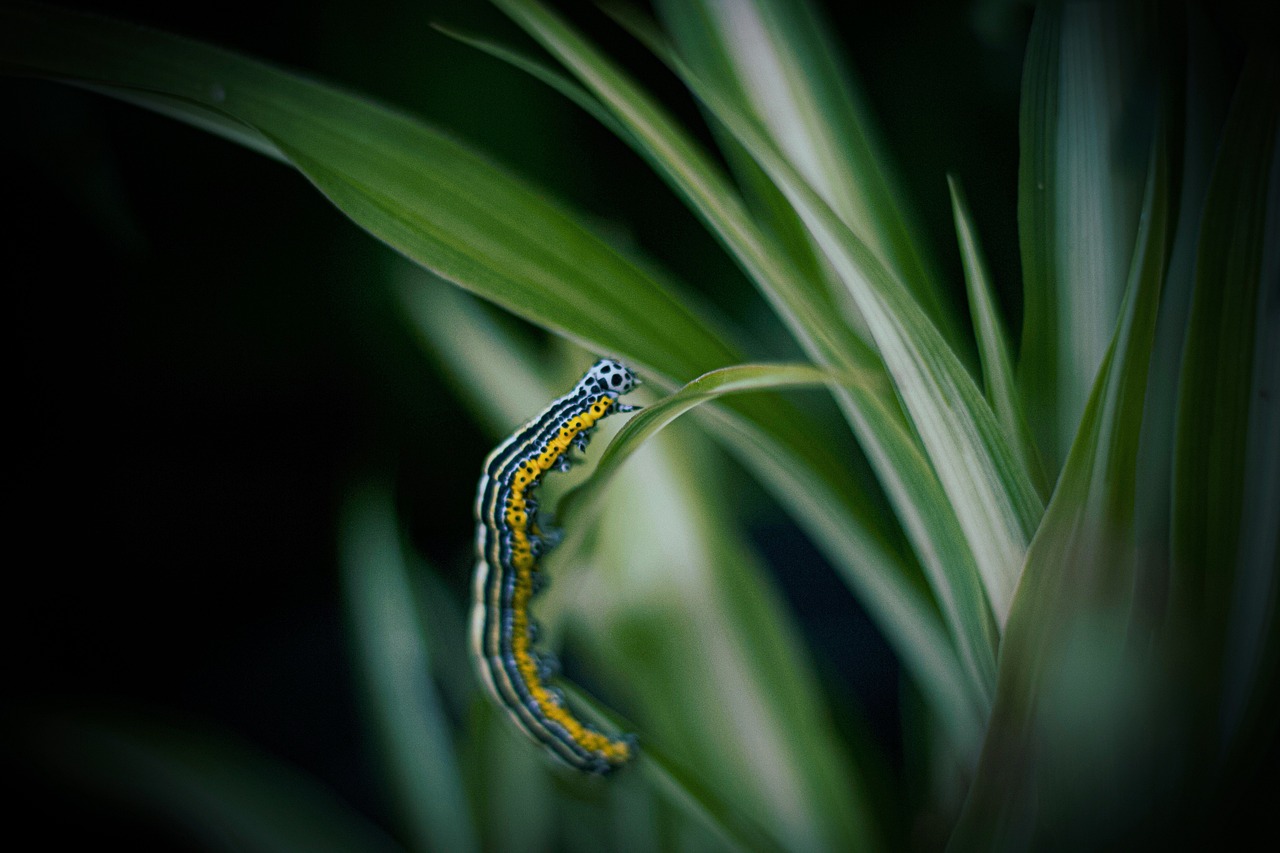Black and orange caterpillars are captivating creatures that often spark curiosity. While their vibrant colors can be visually stunning, they can also indicate potential threats to gardens and crops. This duality raises the question: are these caterpillars striking beauties or pests?
Caterpillars are the larval stage of butterflies and moths. They play a crucial role in the ecosystem, serving as food for many birds, mammals, and other insects. The coloration of black and orange caterpillars is often a warning signal to predators, indicating that they may be toxic or distasteful. This coloration can be both a survival mechanism and a reason for their appeal to nature enthusiasts.

Many species of caterpillars exhibit this striking color combination. Some are harmless and contribute positively to the environment, while others can devastate plants and crops. Understanding their differences is essential for gardeners and nature lovers alike. Below is a table showcasing some common black and orange caterpillars along with their characteristics:
| Common Name | Scientific Name | Diet | Impact |
|---|---|---|---|
| Black Swallowtail Caterpillar | Papilio polytes | Parsley, fennel, dill | Beneficial; supports butterfly population |
| Spicy Moth Caterpillar | Phaeostygia nigra | Various plants | Can be a pest; may damage garden plants |
| Northern Tiger Swallowtail Caterpillar | Papilio canadensis | Trees and shrubs | Beneficial; important for biodiversity |
| Hickory Horned Devil | Citheronia regalis | Hickory, walnut | Harmless; impressive size, harmless to plants |
Understanding Black and Orange Caterpillars
The striking appearance of black and orange caterpillars often leads to misinterpretation. While many people may admire their beauty, it is essential to recognize their potential impact on the environment. Some species feed exclusively on specific plants, leading to significant ecological consequences if they flourish unchecked.
For instance, the black swallowtail caterpillar feeds on herbs like parsley and dill. It is generally considered beneficial due to its role in supporting butterfly populations. However, other species, such as the spicy moth caterpillar, can pose challenges for gardeners by damaging crops.
The feeding habits of these caterpillars greatly influence their classification as pests or beauties. Caterpillars that consume a wide range of plants may be more likely to become pests in cultivated areas. Conversely, those that feed on native plants often help maintain the balance of local ecosystems.
It is also important to consider the life cycle of these caterpillars. They undergo several molts before transforming into pupae and eventually emerging as adult butterflies or moths. This transformation can take weeks or even months, depending on the species and environmental factors.
Gardeners can take proactive measures to manage the presence of black and orange caterpillars. Implementing integrated pest management practices can help control populations while still allowing beneficial species to thrive. This approach involves monitoring caterpillar activity and employing natural predators to keep pest numbers in check.
In conclusion, black and orange caterpillars present a complex picture in nature. Their beauty can enchant observers, yet their appetite can threaten gardens and crops. Understanding these fascinating creatures requires attention to their behavior and environmental roles.
Identifying Common Black and Orange Caterpillars
Recognizing different species of black and orange caterpillars is essential for understanding their potential impact on gardens and ecosystems. Each species has unique characteristics that can help distinguish them from one another. Here are some notable features to consider:
- Color Patterns: The distinct color combinations can serve as a primary identifier. Some may have vibrant orange stripes or spots against a black background, while others may exhibit variations in shades.
- Body Shape: The shape and size of the caterpillar can vary significantly. Some may be stout and robust, while others might be slender and elongated.
- Hair or Spines: Certain caterpillars possess hair-like structures or spines that can deter predators. This feature may also indicate whether the caterpillar is toxic.
Familiarizing oneself with these characteristics can aid in the identification process, allowing for informed decisions regarding pest management or conservation efforts.
Notable Species of Black and Orange Caterpillars
To further assist in identification, here are several common species of black and orange caterpillars, along with their defining traits:
-
Black Swallowtail Caterpillar:
- Appearance: Typically green with black and yellow markings.
- Host Plants: Prefers parsley, dill, and fennel.
- Impact: Beneficial; contributes to the butterfly population.
-
Spicebush Swallowtail Caterpillar:
- Appearance: Black with orange spots, resembling bird droppings.
- Host Plants: Feeds on spicebush and sassafras.
- Impact: Generally harmless but can be numerous in certain areas.
-
Hickory Horned Devil:
- Appearance: Large with black and green coloration, featuring horn-like projections.
- Host Plants: Feeds on hickory and walnut trees.
- Impact: Harmless; impressive but non-threatening to plants.
-
Viceroy Caterpillar:
- Appearance: Dark green or black with orange bands.
- Host Plants: Feeds on willows and other wetland plants.
- Impact: Mimics the toxic monarch caterpillar; serves as a deterrent to predators.
The Role of Caterpillars in the Ecosystem

Caterpillars, including those that are black and orange, play a vital role in various ecosystems. They contribute significantly to biodiversity and serve as an essential food source for numerous animals. Some of their ecological functions include:
- Food Source: Caterpillars provide nourishment for birds, small mammals, and other insects. Their presence is crucial for maintaining healthy food webs.
- Pollination: While not all caterpillars are pollinators, adult butterflies and moths contribute to plant reproduction by transferring pollen between flowers.
- Soil Enrichment: As caterpillars feed on plants, they contribute organic matter to the soil once they pupate or die. This process enhances soil fertility.
The interdependence of caterpillars and their environment highlights the importance of preserving their habitats. Recognizing their beneficial roles can encourage conservation efforts within local ecosystems.
Caterpillar Behavior and Feeding Habits
The behavior of black and orange caterpillars varies among species. Understanding these behaviors helps in managing their populations effectively. Some key aspects include:

- Nocturnal vs. Diurnal: Many caterpillars are primarily active at night, seeking food when predators are less active. Others may feed during the day but often seek shelter to avoid detection.
- Feeding Patterns: Some caterpillars exhibit specific feeding habits, such as eating only certain parts of plants or consuming leaves selectively. This behavior can influence plant health significantly.
- Molt Frequency: Caterpillars shed their skin multiple times throughout their development. Each molt may be triggered by factors like food availability or environmental conditions, influencing growth rates.
These behavioral traits are critical for understanding how to manage caterpillar populations effectively
Impact of Black and Orange Caterpillars on Gardens

The presence of black and orange caterpillars in gardens can have both positive and negative effects. While some species contribute to the overall health of ecosystems, others may lead to significant damage to plants and crops. Understanding these impacts helps gardeners make informed decisions.
Beneficial Aspects
Certain black and orange caterpillars play a vital role in enhancing biodiversity and supporting the ecosystem. Here are some beneficial aspects:
- Pollination: Adult butterflies and moths that emerge from these caterpillars contribute to the pollination of various plants, helping to increase fruit and flower production.
- Food Source: Caterpillars serve as essential food for birds, small mammals, and other insectivores. Their presence helps sustain local wildlife populations.
- Soil Health: When caterpillars feed on plant leaves, they stimulate new growth, which can enhance soil health through increased organic matter.
These benefits emphasize the importance of maintaining a balance between nurturing beneficial caterpillars while managing those that may cause harm.
Pest Concerns
While some caterpillars are beneficial, others can become pests that threaten the health of gardens. Here are some pest concerns related to black and orange caterpillars:
- Vegetation Damage: Certain species, like the spicy moth caterpillar, can cause extensive damage to vegetable gardens and ornamental plants by eating leaves and stems.
- Rapid Population Growth: In favorable conditions, pest species can reproduce quickly, leading to infestations that overwhelm plants, resulting in poor growth or plant death.
- Spread of Disease: Some caterpillars may introduce pathogens or pests to plants, compounding the damage caused by their feeding habits.
Understanding these concerns allows gardeners to take proactive measures in managing populations of potentially harmful caterpillars.
Managing Black and Orange Caterpillar Populations
Effective management strategies can help control black and orange caterpillar populations while preserving beneficial species. Here are some approaches:
Integrated Pest Management (IPM)
Integrated Pest Management (IPM) is a holistic approach that combines various techniques to manage pest populations sustainably. Key components include:
- Monitoring: Regularly checking for caterpillar activity helps identify potential infestations early.
- Biological Control: Introducing natural predators, such as birds or parasitic wasps, can help keep caterpillar numbers in check without harming beneficial insects.
- Cultural Practices: Rotating crops, maintaining plant diversity, and removing debris can reduce the likelihood of caterpillar infestations.
Naturally Derived Solutions
For gardeners preferring organic solutions, several naturally derived methods can deter or manage caterpillar populations:
- Neem Oil: This natural pesticide disrupts the life cycle of caterpillars when sprayed on affected plants.
- Diatomaceous Earth: Sprinkling this fine powder around affected plants can deter caterpillars by damaging their exoskeletons.
- Handpicking: For smaller infestations, manually removing caterpillars can be an effective way to protect plants.
Implementing these management strategies can help gardeners maintain healthy ecosystems while minimizing damage from black and orange caterpillars.
The Importance of Education and Awareness
Increasing awareness about the roles of black and orange caterpillars in gardens can lead to more informed choices among gardeners. Educational resources can help individuals recognize beneficial species versus pests. Here are some methods to enhance awareness:
- Workshops and Seminars: Local gardening clubs or extension services can offer workshops focused on pest identification and management strategies.
- Field Guides: Providing easy-to-use field guides can assist gardeners in identifying different caterpillar species.
- Community Outreach: Engaging with local communities through events or social media can spread knowledge about the ecological significance of caterpillars and promote best practices for management.
By fostering education and awareness, gardeners can contribute positively to their environments while addressing the challenges posed by black and orange caterpillars.
Final Considerations on Black and Orange Caterpillars
Understanding the complex roles that black and orange caterpillars play in our ecosystems is vital for effective gardening and environmental stewardship. These strikingly colored creatures are not just visually appealing; they are also integral components of the food web. Recognizing their contribution to pollination, soil health, and biodiversity is crucial for anyone interested in maintaining a healthy garden or natural habitat.
As we have explored, while many of these caterpillars can be pests when they overpopulate or target specific crops, they are often part of the natural balance within ecosystems. Gardeners should remain vigilant but also appreciate the beauty and ecological significance of these insects. By adopting integrated pest management practices and employing natural solutions, gardeners can mitigate the risks posed by harmful caterpillar species while promoting the well-being of beneficial ones.
Additionally, fostering an environment that supports the presence of native plants can greatly benefit garden ecosystems. Native plants provide food and habitat for many beneficial insects, including the adult forms of these caterpillars—butterflies and moths. By focusing on planting diverse native species, gardeners can create a more resilient ecosystem that naturally regulates pest populations.
Conclusion
In conclusion, black and orange caterpillars embody a fascinating intersection of beauty and potential pestilence in nature. Their vibrant colors serve as a warning to predators, showcasing their role in the ecosystem as both prey and pest. As gardeners and nature enthusiasts, it is essential to strike a balance between appreciating these striking caterpillars and managing those that pose a threat to our gardens.
Through education and community engagement, we can enhance our understanding of these creatures, allowing us to make informed decisions about pest management and ecosystem preservation. By embracing integrated approaches and promoting biodiversity through native plantings, we can coexist harmoniously with black and orange caterpillars. Ultimately, recognizing their dual nature as both beauties and potential pests empowers us to protect our gardens while celebrating the wonders of nature.
As we move forward, let us continue to explore the intricacies of our ecosystems and work towards sustainable practices that benefit both plants and the myriad of insects that share our world. Together, we can foster an environment where both striking beauties and beneficial species thrive.
